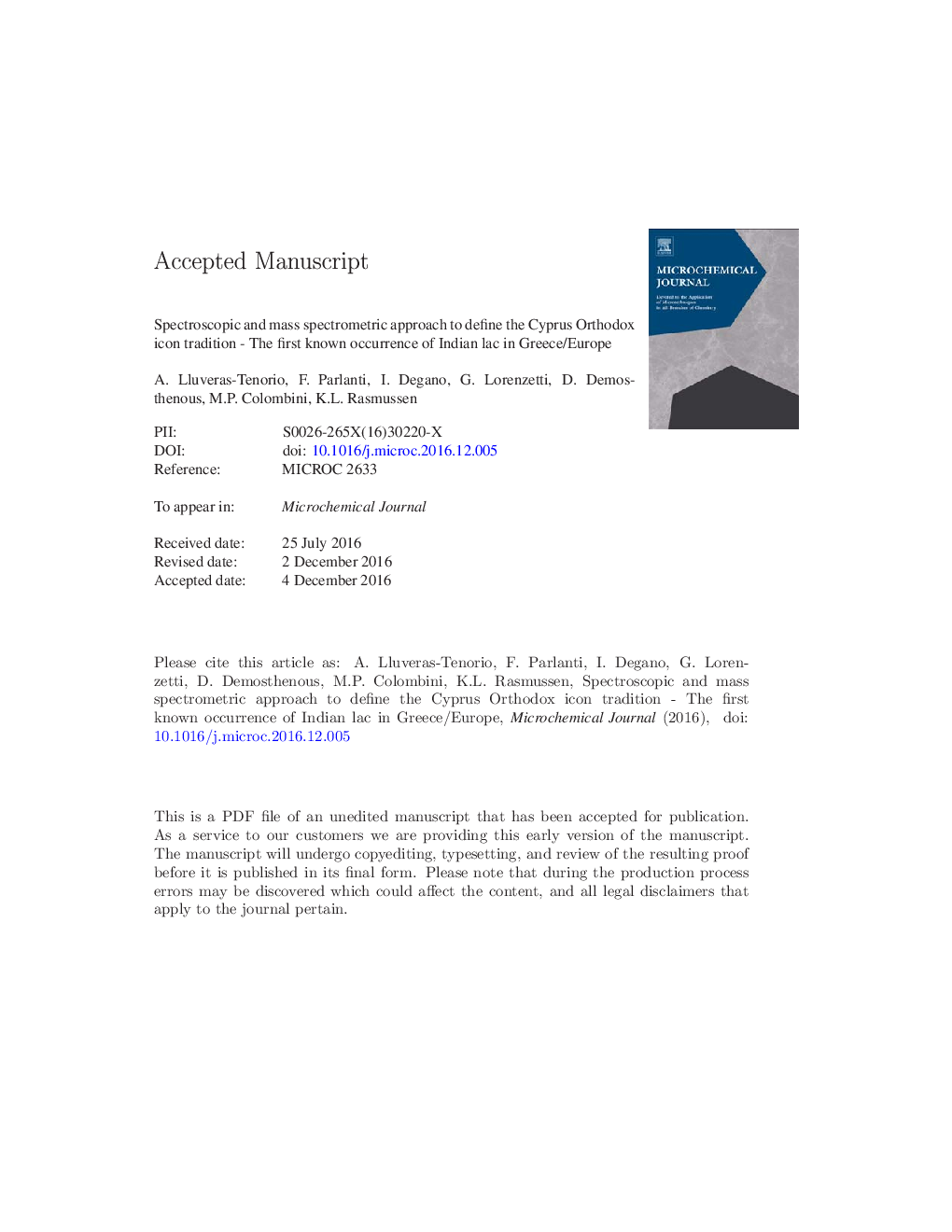| Article ID | Journal | Published Year | Pages | File Type |
|---|---|---|---|---|
| 5139263 | Microchemical Journal | 2017 | 22 Pages |
Abstract
The identification of pigments and fillers was performed using micro-Raman spectroscopy and Fourier Transform Infrared spectroscopy (FT-IR). In order to determine the binding medium, Pyrolysis Gas Chromatography-Mass Spectrometry (Py/GC/MS) and Gas Chromatography-Mass Spectrometry (GC/MS) were used. The study of the organic colorants was performed by Liquid Chromatography-tandem Mass Spectrometry (LC-MS/MS) analysis. Both inorganic pigments and organic colorants were used to create the red hues in the icons. Cinnabar was identified in almost all the paint samples studied, although in some cases red lead was also found. European cochineal, kermes, redwood and Indian lac were identified in the red paints, in combination with inorganic pigments. Moreover, stratigraphic analyses allowed us to assess that animal glue and calcium sulphate were used for the preparation layers, while egg was used as binding medium in the red paint layers. The identification of Indian lac in a 12th century icon is the first known occurrence reported in the literature of this organic colorant in the European tradition.
Related Topics
Physical Sciences and Engineering
Chemistry
Analytical Chemistry
Authors
A. Lluveras-Tenorio, F. Parlanti, I. Degano, G. Lorenzetti, D. Demosthenous, M.P. Colombini, K.L. Rasmussen,
